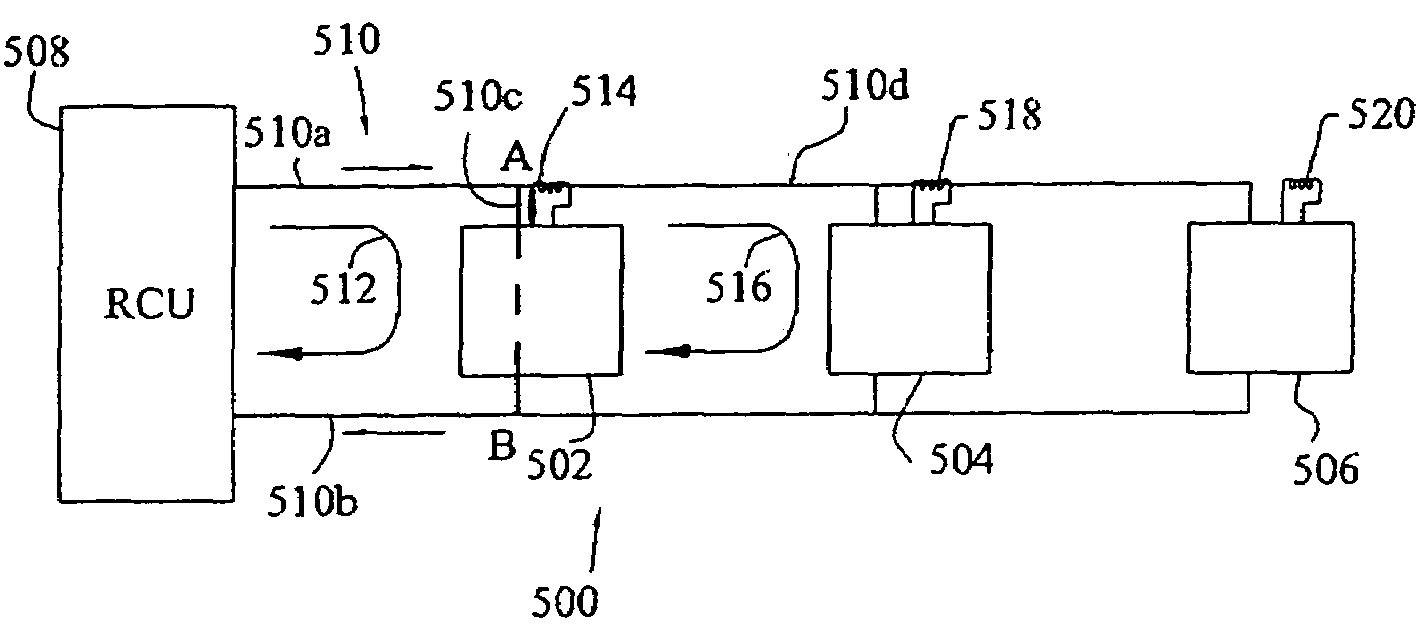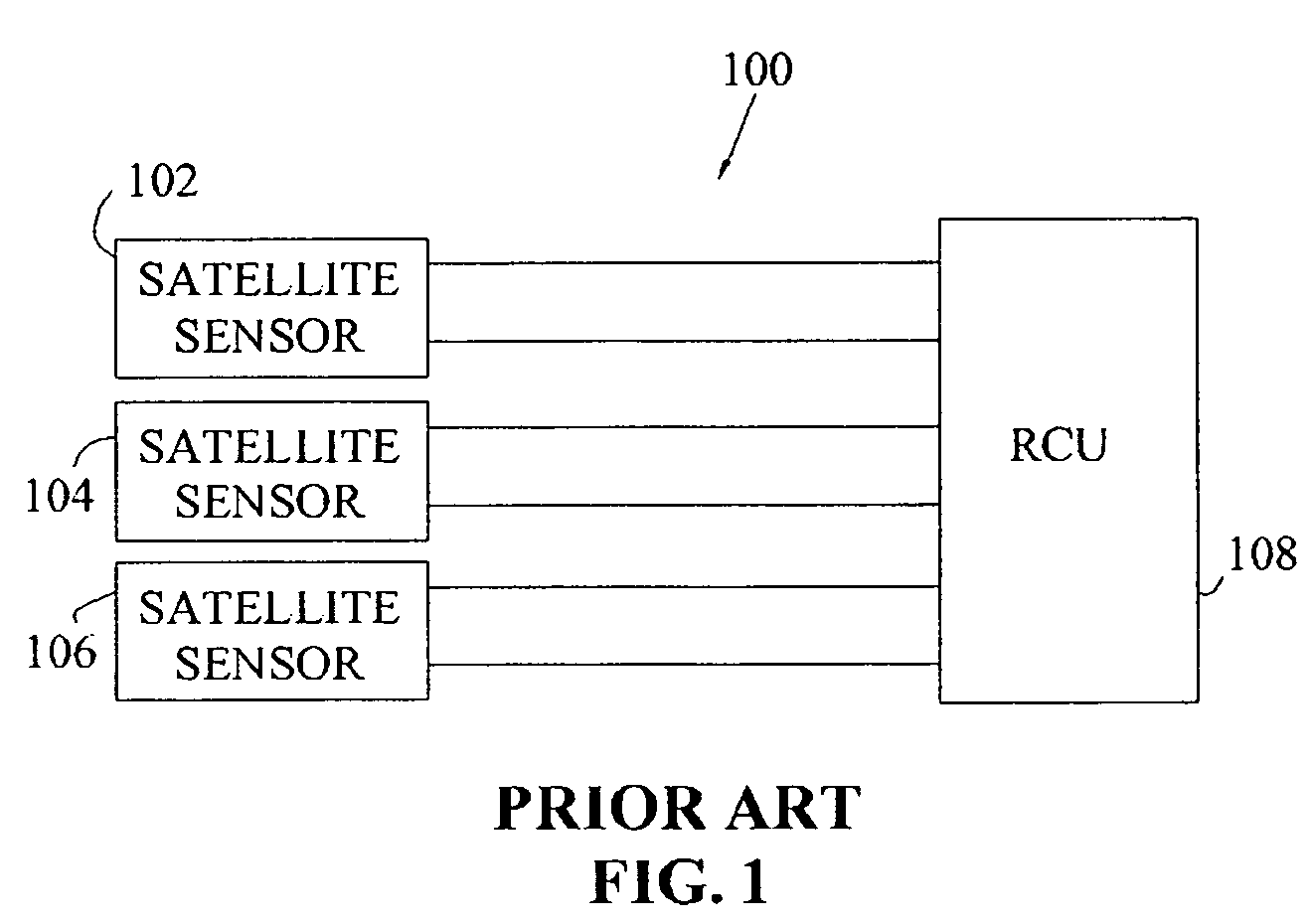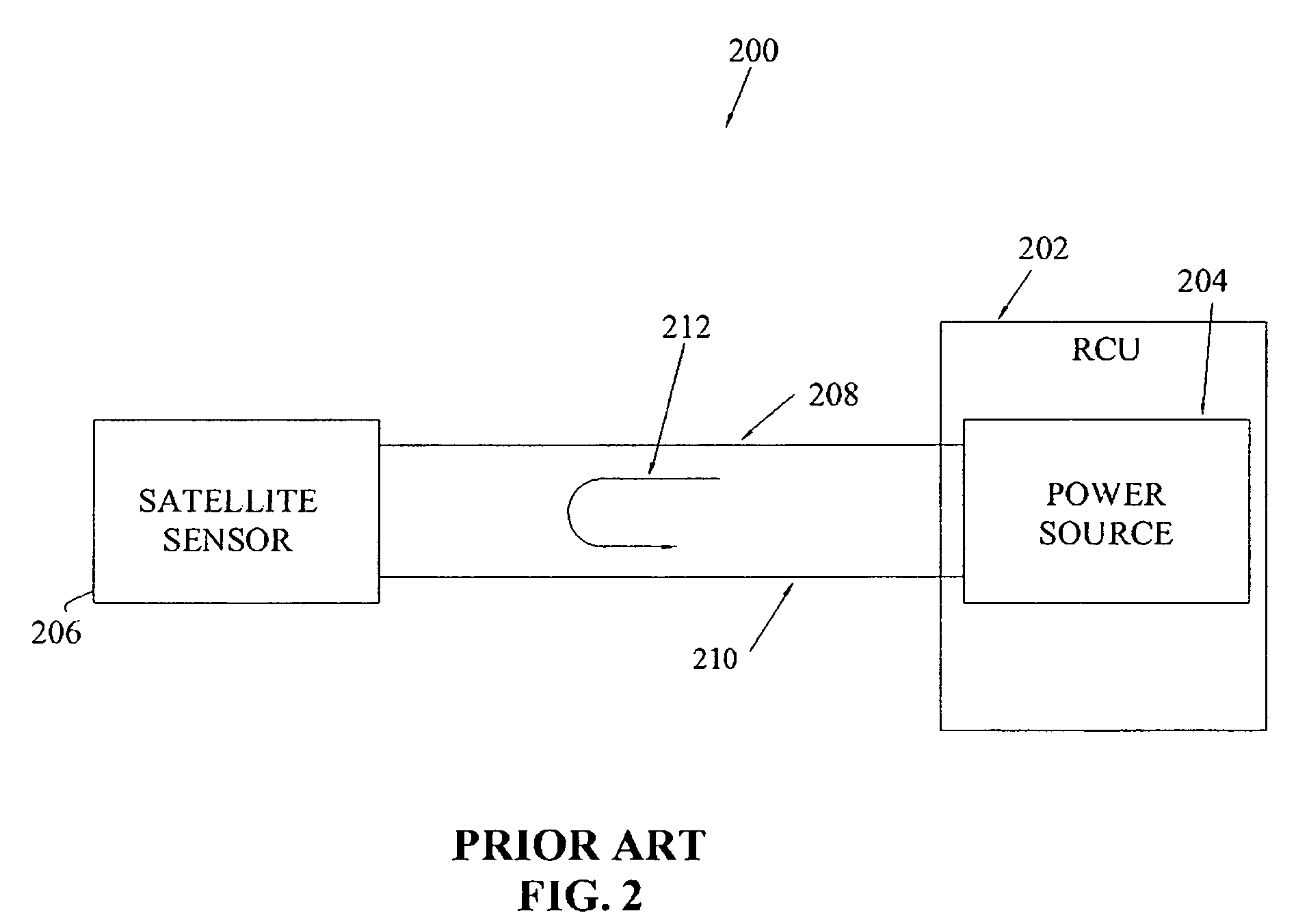Method for multiple sensors to communicate on a uni-directional bus
a communication method and sensor technology, applied in the field of communication systems, can solve the problems of increasing the cost of adding a transmitting sensor to the system, the cost of the additional transmitting sensor and the interface of the sensor, and the significant increase in the initial cost within the rcu b>308/b>, and the incremental cost of adding a sensor to the system b>300/b> is limited to the cost of the additional sensor
- Summary
- Abstract
- Description
- Claims
- Application Information
AI Technical Summary
Benefits of technology
Problems solved by technology
Method used
Image
Examples
first embodiment
[0024]Three (3) data modulation techniques may be used by the transmitting sensors in communicating over the uni-directional communication bus. In the present invention, a time-domain multiplexing technique is used. This method is based on the capabilities of one or more transmitting sensors to detect communication by other sensors and delay its own communication until the other transmitting sensors have stopped communicating. In this form of the invention, the satellites can be said to “take turns” using the communication bus.
second embodiment
[0025]In the present invention, a frequency domain multiplexing technique is used. In frequency-domain multiplexing, each transmitting sensor is assigned a portion of the frequency spectrum that is separate from the portions assigned to all other transmitting sensors on the same bus. The power source can distinguish communication from different transmitting sensors by separating sensed communication into the discrete portions of the frequency domain used by each transmitting sensor.
third embodiment
[0026]In the present invention, an amplitude domain multiplexing technique is used. This method is based on assigning a current modulation amplitude to each transmitting sensor such that the communication amplitude from any one or several transmitting sensors is unique to that one or several transmitting sensors. For example, transmitting sensors 410, 412, 414 may use a two state (idle / active) method of communication and may be assigned active communication amplitudes of 5 mA, 10 mA, and 20 mA, respectively. Accordingly, any combination of transmitting sensor communication states is uniquely distinguishable from any other combination of communication states because all of the possible combinations of states from transmitting sensors 410, 412, 414 produce a combined amplitude unique to that particular combination of states such that RCU 402 can determine the simultaneous states of all transmitting sensors 410, 412, 414. It is contemplated that other embodiments of the present inventi...
PUM
 Login to View More
Login to View More Abstract
Description
Claims
Application Information
 Login to View More
Login to View More - R&D
- Intellectual Property
- Life Sciences
- Materials
- Tech Scout
- Unparalleled Data Quality
- Higher Quality Content
- 60% Fewer Hallucinations
Browse by: Latest US Patents, China's latest patents, Technical Efficacy Thesaurus, Application Domain, Technology Topic, Popular Technical Reports.
© 2025 PatSnap. All rights reserved.Legal|Privacy policy|Modern Slavery Act Transparency Statement|Sitemap|About US| Contact US: help@patsnap.com



